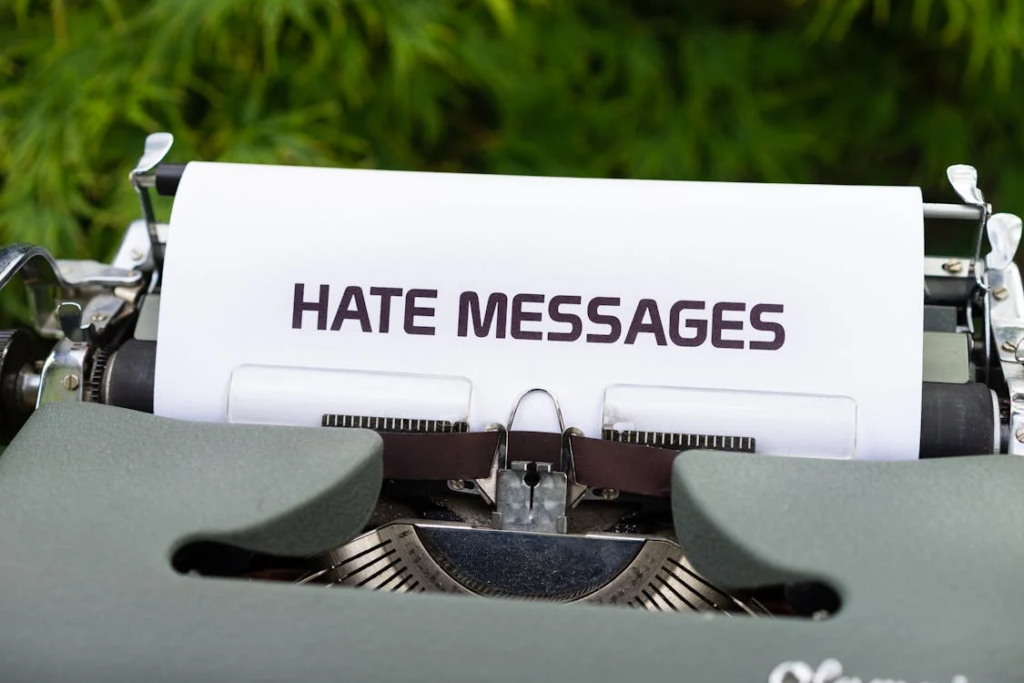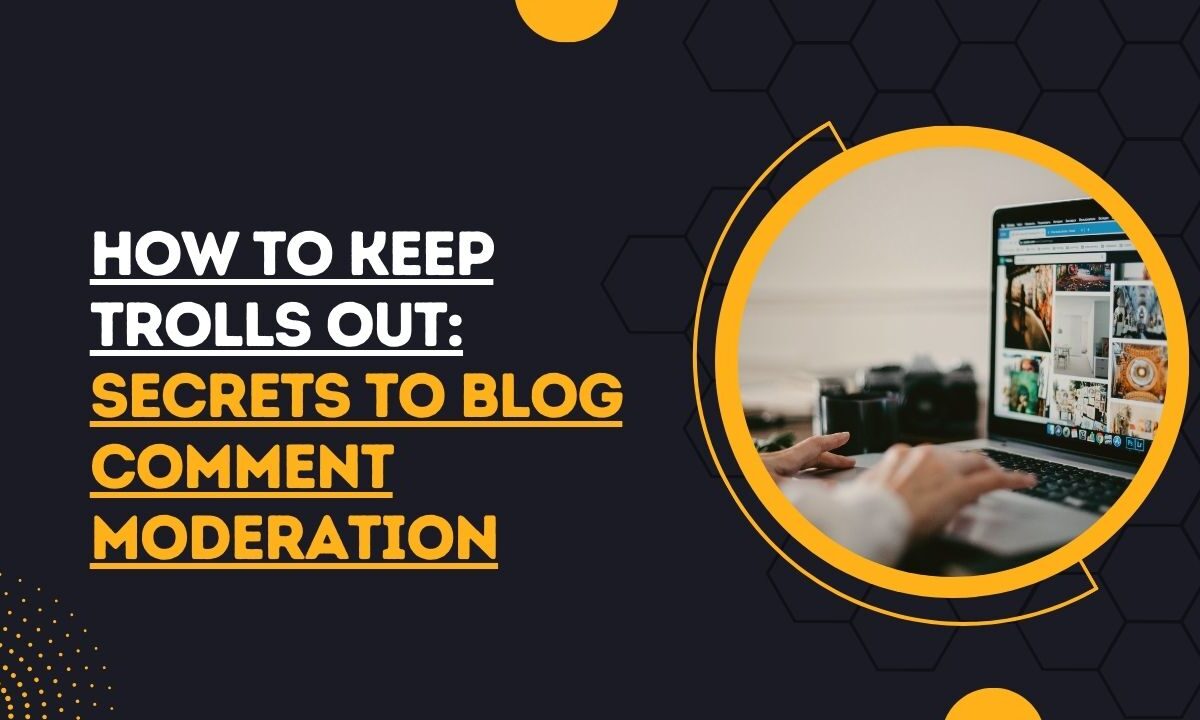How to Keep Trolls Out: Secrets to Blog Comment Moderation
Are trolls hijacking your comment section and driving genuine readers away? Effective blog comment moderation is the secret weapon to reclaim your space and foster meaningful conversations.
A Pew Research Center study found that 22% of online harassment victims experienced toxicity in website comment sections, highlighting the urgency to act immediately.
This article unpacks practical tips to filter out negativity while keeping engagement alive.
Whether you’re new to blogging or a seasoned pro, you’ll discover proven strategies to safeguard your blog’s community without stifling its spirit.
Ready to take control?
Let’s dive in and unlock the secrets to troll-proofing your blog.
What is Blog Moderation?
Blog moderation is the process of overseeing and managing the interactions within your blog’s comment sections.
The goal is to maintain a safe and respectful space where meaningful conversations can happen, free from toxic individuals.
Why Is It Crucial for Your Blog?
Effective moderation helps to foster positive discussions, encourages engagement, and maintains your blog’s reputation.
Without it, your comment section can quickly turn into a battlefield of negativity, driving away potential readers and valuable contributors.
Understanding Online Trolls
Before you can effectively moderate your blog, it’s important to understand the enemy—online trolls.

Defining Online Trolls
Trolls are individuals who intentionally stir up trouble online by provoking or insulting others.
Their primary goal is to upset the community or derail productive discussions.
Common Tactics Used by Trolls
Trolls often use inflammatory language, post off-topic comments, or spam irrelevant links.
They thrive on creating chaos and getting attention, which is why it’s crucial to recognize their tactics early.
The Impact of Trolls on Your Blog
The presence of trolls can have serious consequences for your blog.
Disrupting Conversations
Trolls derail meaningful conversations, making it difficult for others to engage in thoughtful discussions. They can shift the focus from valuable content to petty arguments.
Damaging Reputation and Engagement
Allowing trolls to run rampant can tarnish your blog’s reputation.
It can discourage genuine readers from commenting, leading to a decrease in overall engagement.
Setting Clear Blog Guidelines
A strong moderation strategy starts with clear guidelines.
Defining Acceptable Behavior
Make sure your blog visitors know what behavior is expected of them.
Outline clear rules for commenting, such as no hate speech, spam, or personal attacks.
Creating a Comment Policy
A comment policy gives your readers a framework for how they should interact.
It can also serve as a reference point when you need to take action against trolls.
Encouraging Positive Engagement
Encourage readers to contribute meaningfully by asking thoughtful questions and sharing constructive feedback.
This creates an environment where discussions are productive and rewarding for everyone involved.
Establishing Consequences for Violations
Be clear about the consequences for not following your blog’s guidelines, such as comment removal or being blocked.
Having a structured approach helps deter disruptive behavior and keeps the conversation respectful.
Providing Examples of Proper Behavior
Provide examples of what constitutes a good comment, highlighting respectful and thoughtful language.
This helps set the tone for new visitors, guiding them on how to engage in a meaningful way.
Regularly Reviewing and Updating Guidelines
Review and update your guidelines periodically to ensure they stay relevant to your audience and the nature of your blog.
Adapting your rules as your community grows keeps your comment section welcoming and productive.
Blog Comment Moderation Strategy
| Blog Comment Moderation Strategy | Description | Benefit |
|---|---|---|
| Defining Acceptable Behavior | Outline clear rules for commenting, such as no hate speech, spam, or personal attacks. | Helps visitors understand what is expected, maintaining a respectful environment. |
| Creating a Comment Policy | Establish a comment policy that gives readers a framework for how they should interact, serving as a reference when taking action against trolls. | Provides clarity and consistency when enforcing rules, ensuring fair moderation. |
| Encouraging Positive Engagement | Encourage readers to ask thoughtful questions and share constructive feedback to foster meaningful conversations. | Creates a space where discussions are productive and rewarding for all participants. |
| Establishing Consequences for Violations | Clearly define the consequences for violating guidelines, such as comment removal or blocking. | Deters disruptive behavior and helps maintain a respectful and controlled environment. |
| Providing Examples of Proper Behavior | Give examples of respectful and thoughtful comments to guide new visitors on how to engage appropriately. | Sets a positive tone and helps readers understand how to interact in a constructive and meaningful manner. |
| Regularly Reviewing and Updating Guidelines | Periodically review and update the guidelines to ensure they stay relevant to your blog’s evolving needs and audience. | Keeps the comment section aligned with the community’s growth and maintains a welcoming, productive space. |
Tools for Effective Blog Moderation
Luckily, there are a variety of tools for seamless blog moderation available to help you manage comments and block unwanted behavior.
Built-in Comment Filters

Most blogging platforms come with basic filters that automatically flag or hold certain comments for approval.
These filters can catch spam and inappropriate language, reducing your workload.
Third-party Moderation Plugins
For more advanced moderation, you can use third-party plugins like Akismet or Disqus.
These tools provide extra layers of protection by detecting patterns associated with trolling and spam.
Automating Moderation with AI
AI-powered tools can scan comments in real time. Automating blog moderation with AI helps identify problematic content based on pre-set criteria.
These tools can automatically block or flag trolls without requiring manual intervention.
Manually Moderating Comments: Pros and Cons
While automation can help, manual moderation for right comments is still essential in some cases.
When to Moderate Comments Manually
If your blog has a highly engaged or niche audience, manual moderation may be necessary to ensure the quality of interactions.
You may want to review comments for tone, context, and relevancy.
Pros of Manual Moderation
Manual moderation gives you more control over the tone and quality of comments.
You can remove content that doesn’t fit your blog’s voice and remove trolls with precision.
Cons of Manual Moderation
On the flip side, manual moderation is time-consuming. As your blog grows, it can become overwhelming to manually review every comment, especially if you’re dealing with a high volume of traffic.
Setting Up a Comment Approval System
A comment approval system can be an effective way to control who gets to participate in your blog discussions.
Pre-approval vs. Post-approval
Pre-approval requires you to review every comment before it’s posted, while post-approval allows comments to appear but holds them for moderation later.
While post-approval is quicker but may let some troll comments slip through. On the other hand, pre-approval offers more control but may delay conversation flow.
How to Effectively Implement Approval Systems
The key is to strike a balance between control and speed. A combination of pre-approval for first-time commenters and post-approval for regular visitors can work well.
Monitoring Your Blog for Troll Activity
It’s important to be proactive when it comes to spotting troll behavior.
How to Recognize Trolls Early
Trolls often use specific patterns of behavior, such as responding with aggressive language or trying to derail discussions.
Being vigilant and recognizing these signs early can help you prevent them from causing too much damage.
Using Analytics to Track Negative Patterns
Tools like Google Analytics can help you track unusual spikes in negative comments or traffic.
If you notice patterns that correlate with troll activity, it’s time to step up your moderation efforts.
Creating a Safe Space for Positive Conversations
A healthy blog environment encourages productive and respectful discussions.
Encouraging Constructive Criticism
Allowing constructive criticism shows that you value feedback. By fostering an atmosphere of respect, you can discourage trolls who thrive on chaos.
Building a Loyal and Respectful Community
When you create a space where people feel heard and valued, they’re more likely to return and engage in positive ways.
A loyal community can help self-police and discourage trolling.
Dealing with Trolls: Strategies for Responding
Once a troll has been identified, it’s important to decide how to handle them.
Ignoring Trolls
The best strategy in many cases is simply to ignore them. Trolls feed on attention, and by not responding, you remove their power.
Responding Calmly and Professionally
If you must respond, do so calmly and professionally. Don’t engage in arguments—keep it short and polite.
Blocking or Banning Trolls
If a troll continues to disrupt the conversation, don’t hesitate to block or ban them from your blog. This sends a strong message that you won’t tolerate disruptive behavior.
Implementing CAPTCHA and Other Verification Tools
Sometimes, trolls can be bots, not people. CAPTCHA and similar tools can prevent automated spam and keep bots from commenting.
Why CAPTCHA Is Important
CAPTCHA is a simple but effective tool that ensures the person leaving a comment is human.
This prevents bots from flooding your comment section with spam.
Alternatives to CAPTCHA for Verification
If you don’t like CAPTCHA, there are other options, such as requiring users to register or use social media accounts to leave comments.
This adds a layer of verification that deters trolls.
Educating Your Audience About Trolls
Help your readers understand what trolling is and how to handle it.
Helping Readers Identify Trolls

By educating your audience, you empower them to recognize trolling and avoid engaging with it. This can prevent trolls from gaining traction on your blog.
Encouraging Positive Engagement
Encourage readers to focus on positive contributions and report trolls. By fostering a community of positive engagement, you can keep trolls at bay.
Legal and Ethical Considerations
When dealing with trolls, it’s important to be mindful of legal and ethical issues.
Defamation and Freedom of Speech
While you have the right to moderate comments, it’s important to remember that there are legal limits to what you can do, especially when it comes to defamation and freedom of speech.
Protecting Your Blog from Legal Risks
Ensure your moderation policies are clear and fair to avoid legal trouble and minimize legal risks in blog moderation. If necessary, consult a legal professional for advice on how to handle extreme cases of trolling.
Regularly Reviewing and Updating Your Moderation System
Trolls are constantly evolving, so your moderation strategy should evolve too.
Staying Ahead of Troll Tactics
Regularly review your moderation tools and policies to keep up with new trolling tactics. Stay informed and update your system as needed.
Adjusting Your Approach Based on Feedback
Listen to your community. If your readers suggest better ways to handle trolls, be open to changing your approach.
FAQs
What should I do if a troll continues to comment despite being blocked?
You may need to report them to their hosting platform or seek legal advice if the behavior persists.
Can I use AI tools to automatically detect trolls?
Yes, AI tools like Akismet and Disqus can help you identify and block trolls.
How do I educate my audience about trolls without scaring them away?
Keep the message positive and focus on encouraging respectful, constructive conversations.
Are there any tools to prevent automated spam?
CAPTCHA and verification systems can be some good blog comment moderation tools and can prevent bots from spamming your blog.
Should I always engage with trolls when they comment?
It’s best to ignore them or respond professionally if necessary. Engaging with them only feeds their behavior.
Related Posts
Essential Tools and Tips for Seamless Blog Moderation
Utilize comment filters, moderation plugins, and clear guidelines to ensure a smooth and effective blog management process.
Master Blog Moderation with Comment Filters Today
Implement comment filters to automatically block spam and maintain a positive atmosphere on your blog.
Automating Blog Moderation with AI: Keep Trolls Out
Leverage AI-powered tools to detect and filter out inappropriate comments, enhancing your blog’s integrity.
Blog Commenting for Better SEO: A Surefire Path To Top Search Rankings
Encourage meaningful engagement through comments, boosting both SEO and user interaction on your blog.
Conclusion
Blog comment moderation is essential for maintaining a safe, engaging, and welcoming space for your readers.
Trolls can disrupt your blog’s harmony and discourage genuine interactions, but a proactive approach ensures your comment section remains constructive and respectful. Vigilance, combined with the right tools and techniques, is your first line of defense.
Implementing clear guidelines sets the tone for acceptable behavior, while effective moderation tools streamline the process of managing comments.
Encouraging open yet respectful dialogue further helps in building a supportive community where readers feel valued.
Ultimately, successful blog comment moderation is about balancing freedom of expression with the need for order. By fostering a positive atmosphere and staying consistent with your strategies, you can create an environment where meaningful conversations flourish and trolls are kept at bay.

